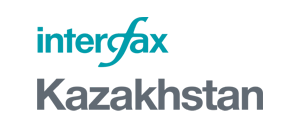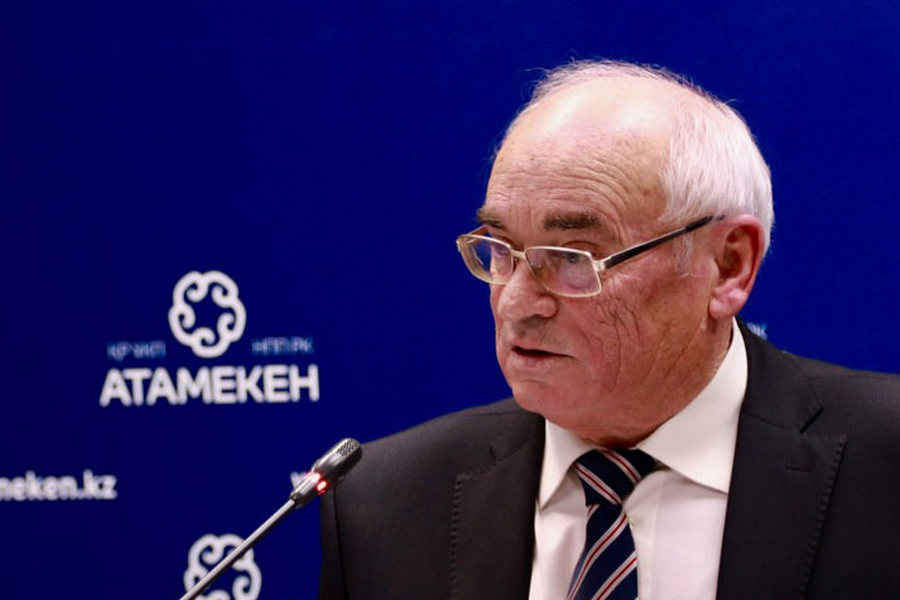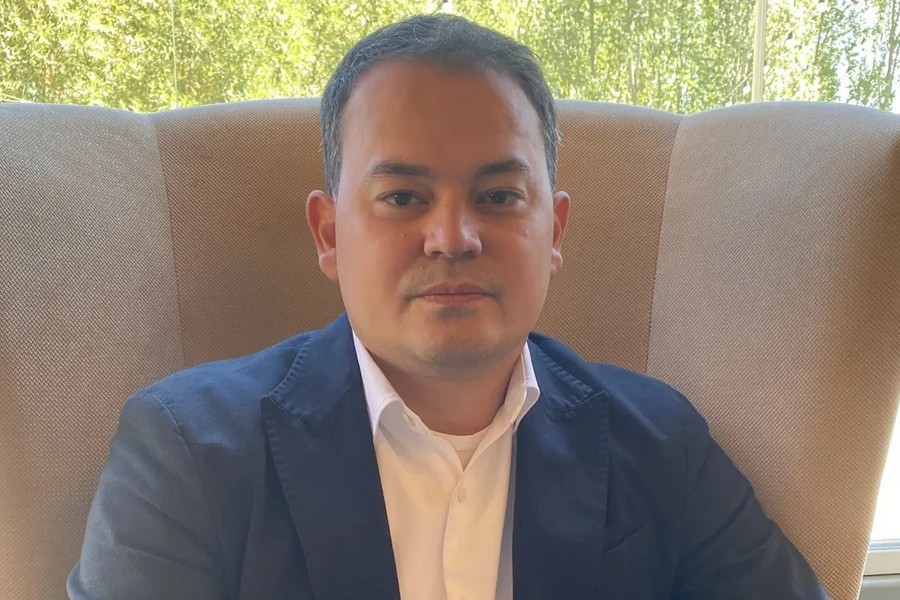Juha KÄHKÖNEN, Deputy Director of the IMF's Middle East and Central Asia Department:
THE BANKS SHOULD ALTER THEIR MANAGEMENT PRINCIPLES TO PREVENT THE APPEARANCE OF NEW BAD LOANS

The International Monetary Fund (IMF) presented its new report on the economic prospects of the Caucasus and Central Asian, Middle East and North African countries in Almaty. Juha KÄHKÖNEN, Deputy Director of the IMF's Middle East and Central Asia Department, talked to Interfax-Kazakhstan about the main conclusions of the report and about what awaits Kazakhstan’s banking sector.
- Mr. Kähkönen, could you be so kind to provide the main highlights from the recent report on Central Asia and Kazakhstan in particular.
- Our main message is that we see this current situation as a window of opportunity for the region and Kazakhstan. After the period when the economic growth was weak because of lower oil prices and weaker growth in the partner countries there is some recovery in the partner countries and in the region and so, for example, in Kazakhstan the growth is picking up to something like 3.3% this year and could be higher. The thing to keep in mind always is that in the medium term the growth will be much higher, maybe, 4%-4.5%. This is much lower than what Kazakhstan and the region experienced during the high oil price era. But given that the forecasts for growth in China, Russia and the Euro Area have been upgraded it is a good opportunity to take policy actions that’s why we see this as the window of opportunity.
The other reason why we see this as the window of opportunity is that there are initiatives under way for regional integration. One of them is the 'One Belt, One Road' initiative, another one is the opening up of Uzbekistan, if it continues, it will be a major plus for the region. And this window of opportunity and the countries that take policy actions to take advantage of this window will do best. The policy actions would include reforms that would revitalize the private sector, changes in the economic model for moving away from commodity dependency towards the private sector-driven non-oil activities.
- When you mentioned 4% growth did you mean the region or Kazakhstan in particular?
- Both. For Kazakhstan we see the growth in the [next] 3-5 years of around 4.3%. If the countries make strong efforts to reform and also to repair their financial systems that have been under stress they can do better and that’s why the window of opportunity exists and the opportunity to use the ongoing recovery to build on this momentum and with bold actions to try to do better than what these projections currently suggest.
- But not for this year because according to the latest IMF forecast GDP is to reach 3.3% this year.
- Yes, that’s probably a conservative projection. I think so far this year the growth has been 4.3%. So, (…) we would be happy to upgrade it.
- The president of Kazakhstan set the government an objective to reach 4% this year. Do you think this is possible?
- Yes, it is certainly possible. As I mentioned so far this year the growth has been 4.3%. Late last year there was pick-up so the basis is higher. It is more challenging to keep the growth rate going but this is quite possible.
- Another question regarding Kazakhstan’s banking sector; currently people, in particular, the general population and experts worry about the state of the banks in Kazakhstan. Currently one of the top 10 banks [by assets] - Bank RBK – have problems with liquidity and the National Bank has announced that it is going to deal with this problem soon. The smaller banks are also under stress due to the significant share of non-performing loans (NPLs) and some of them also have problems with liquidity. What in your opinion are the other main risks and strengths of the banking sector? What should the National Bank do to ensure financial stability?
- First of all, Kazakhstan’s banking sector has strengths. It is well diversified and able to deal with many financial instruments but it has many challenges as well. These [ones] are not new. Already in 2008-10 after the global financial crisis many banks experienced difficulty because there was a lot of borrowing. The banking sector had had vulnerabilities already before external shocks; (…) in particular low oil prices hit the region and Kazakhstan in 2014. And this ignited the earlier difficulties when the prevalence of foreign currency lending and exchange rate fluctuations made it difficult at the time for customers to pay and the banks got bad loan problems.
External shocks worsened the situation because the economic growth was low and so again customers had difficulties paying and there was depreciation, which in itself is a good thing but again made it difficult for customers to pay back loans and so the problem got worse.
Kazakhstan and the other countries in the region have again taken significant steps in response. And in Kazakhstan there was such a condition that the banks needed more capital. More capital has been provided; ideally it should come from the bank owners (shareholders). That’s best international practice. And in line with best international practice the budget should pitch in only as a last resort. But Kazakhstan - this was not feasible under the state budget – put in considerable resources. Now the central bank is putting in capital in the other banks together with their owners. And the central bank is doing this in return for getting more control and supervision over these banks. The important thing is that the banks will now again need capital to operate.
The next challenge is to make sure that the banks improve their lending practices and cooperative culture so that loans are issued based on commercial criteria under good risk management. The banks need to change their ways of bank management so that decisions are made on a sound basis so that the appearance of new bad loans is prevented. All in all, I would say that the government and the central bank have done more than their fair share. And now it’s time for the bank owners and bank [top] management to step up their efforts and make sure that new bad loans do not emerge.
- How has the situation changed in your opinion compared to [what was] three years ago in the banking sector. The central bank has been working on de-dollarization [strategy], on lessening the share of NPLs in the bank accounts.
- I think that a lot of progress has been achieved, challenges have been difficult and as I mentioned that external shocks made the situation even more challenging but the important thing is that (…) actions have been taken to provide new capital and now it’s time to make sure that new lending principles will be [followed based] on a sound basis so that loans will support productive activities and will be paid back.
- The new report [contains] the recommendation that an independent asset review should be undertaken as soon as possible to make sure we know weaknesses of the banks but according to the recent information the National Bank decided to perform the assets review itself and not to cooperate with other organizations. Is it common practice or usually is it performed by independent organizations?
- It would be best practice to do an independent quality review because then one would be more confident that the true size of problems in the banking sector has been identified. But as long as the asset quality review is done properly and [it] gives a reasonable good idea of the size of problems that’s not an issue. The main thing is to act, and the other thing is to address the situation. And I think that Kazakhstan is well on its way to do this.
- Thank you for the interview!
November, 2017
© 2025 Interfax-Kazakhstan news agency
Copying and use of these materials without reference to the source is prohibited
Archive





